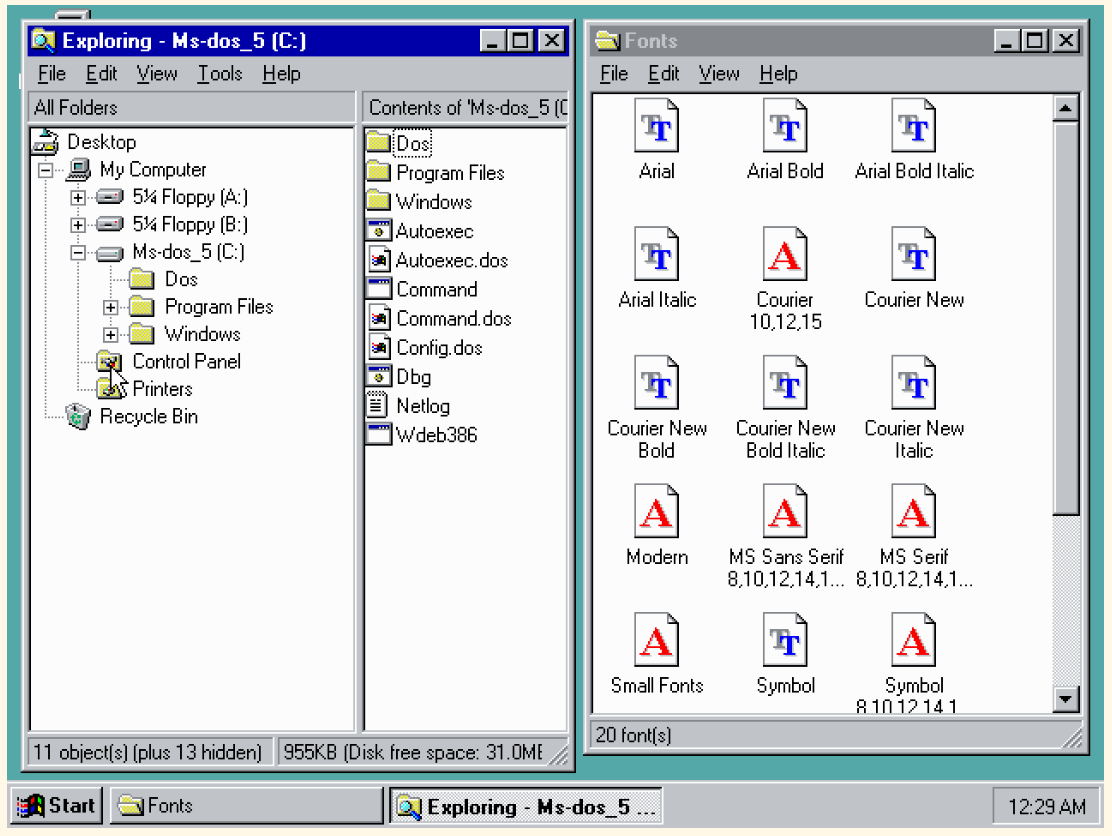
Alberto Marnetto's Notebook
or: A Supposedly Fun Thing I'll Never Do Again
About twenty-seven years ago I discovered a quirk in Windows 95 (and 98). To my knowledge, it has never been published. Well, it’s never too late.

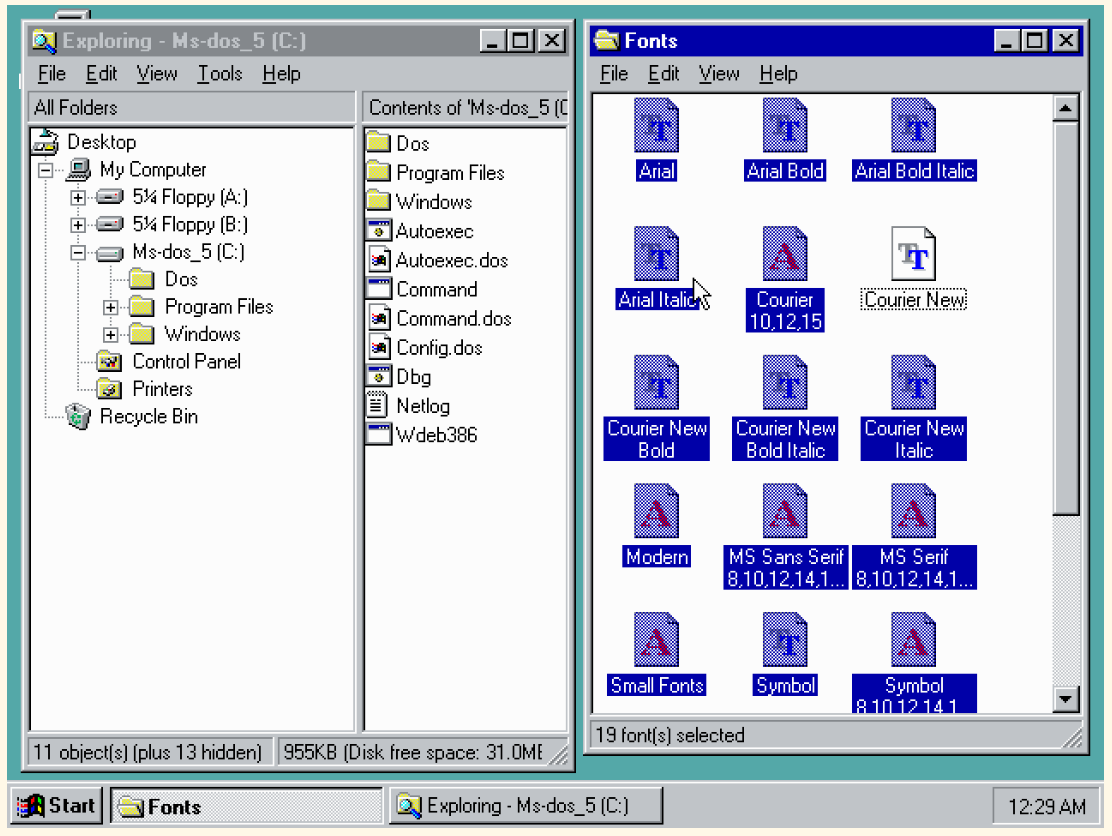
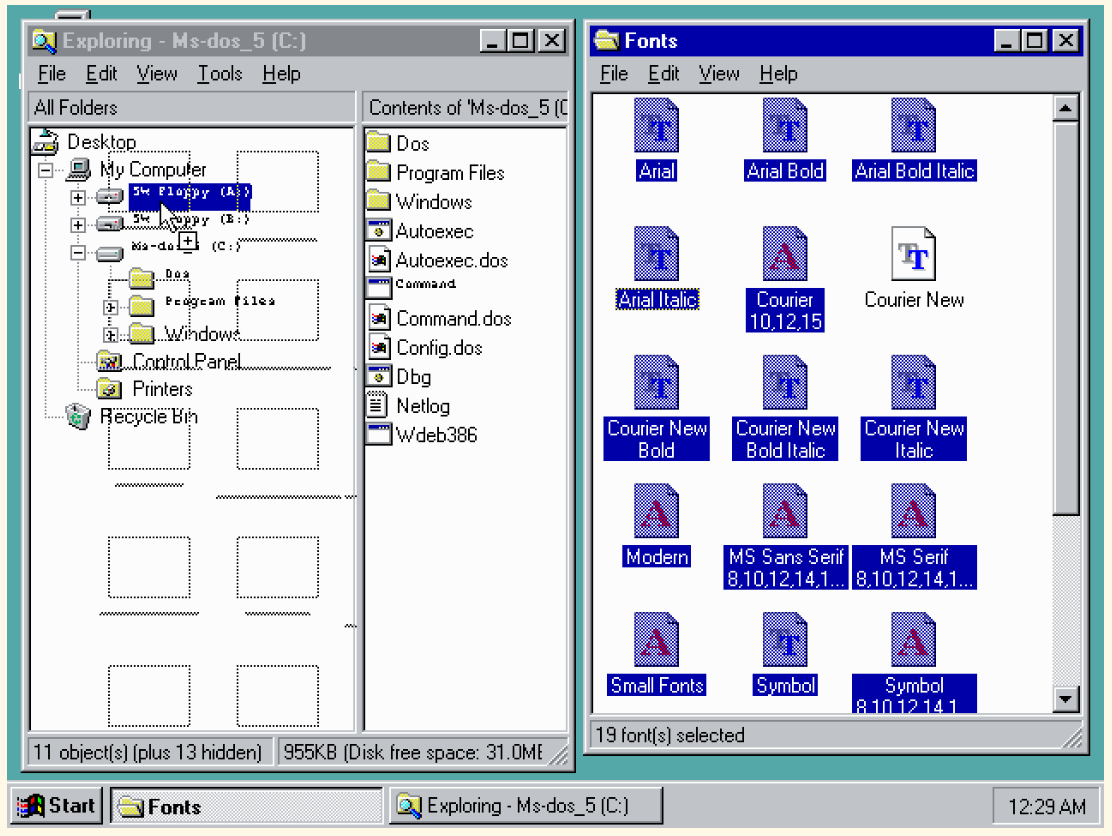
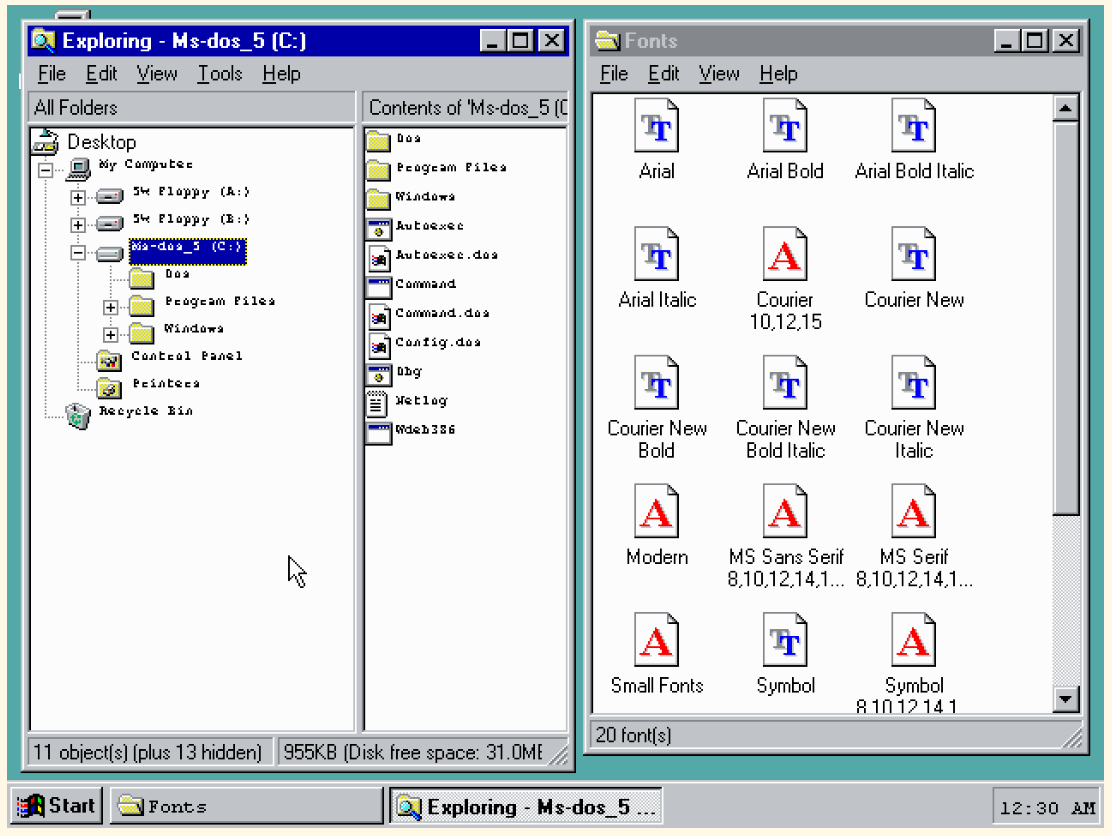
Unfortunately, the effect does not persist after you close the window. You can however apply the trick to the taskbar, whose buttons will then use the new font for the rest of the session. As expected, the System properties dialog does not acknowledge the change and can be used to restore the original font.
What if you do not deselect any font and drag all files? Things get slightly worse:
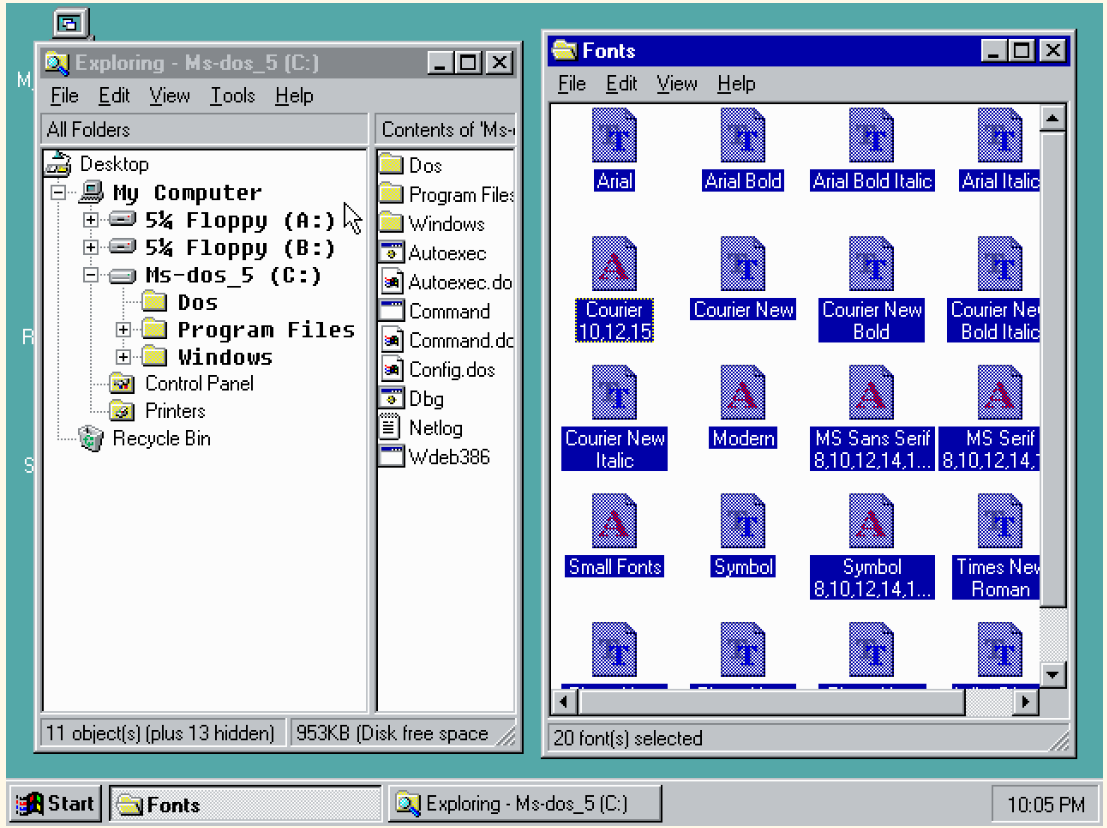
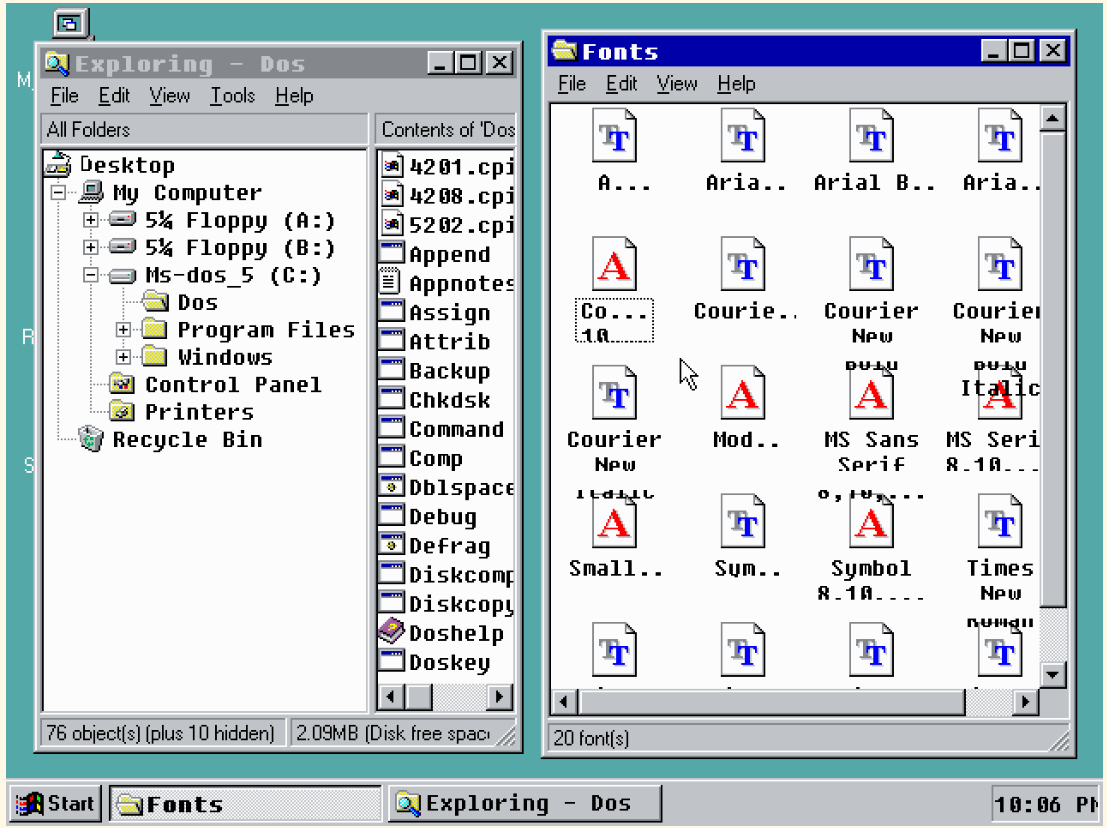
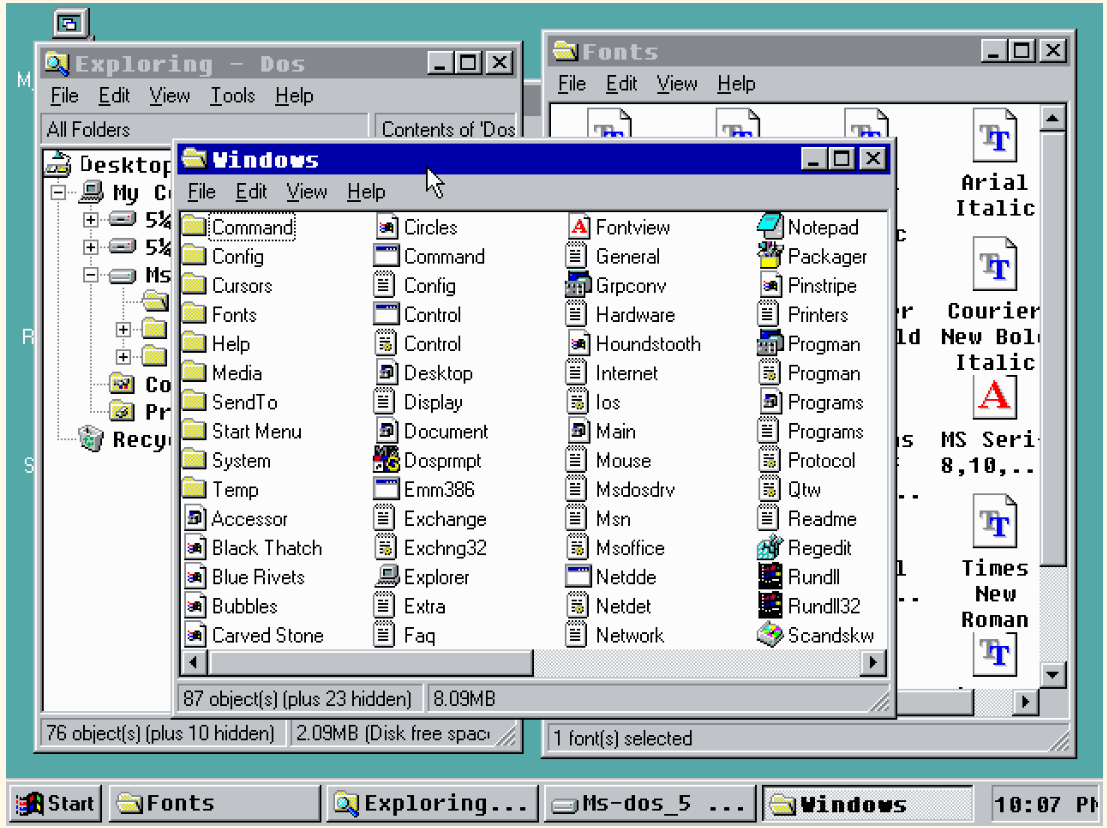
To showcase the phenomenon I have used the online VMs by PCjs Explorer, but I vividly remember discovering it on my old Pentium 75, so it’s not an emulator bug. I was able to reproduce the glitch also in copy’s website, though the effect is less spectacular because the Internet Explorer addition running on his VM prevents the menu font to be altered. However, the fact that it works further proves that it’s not a fluke. The trick also works in Windows 98. I have not tried further versions, but feel free to experiment and send me your results.
Now, why does this happen? If I had infinite time, I’d love to start a debugger and find out what messages are being sent to the windows, but even a technical explanation would still not solve the mystery of why this behavior was implemented in the first place. Since nobody is here to tell the story, here is my headcanon:
But this is just my theory. In particular, the strange effect shown by the nasty variant suggests that some out-of-bounds access is taking place.
I guess the real story will remain a mystery forever. Unless some Microsoft veteran lands by chance on these shores and wants to share the tale. Raymond Chen, are you by any chance reading? Please, don’t keep us in the dark!
Reddit user “fragglet” suggested that the effect can be explained if we suppose that the files being dragged are already considered “missing” from the source directory, so that Windows is forced to use the only remaining font (in the first variant) or an emergency typeface (in the second case). This seems to agree with most of the observations of the experiment. If the explanation is correct it means that Windows is mixing UI and underlying file system in a very questionable way.